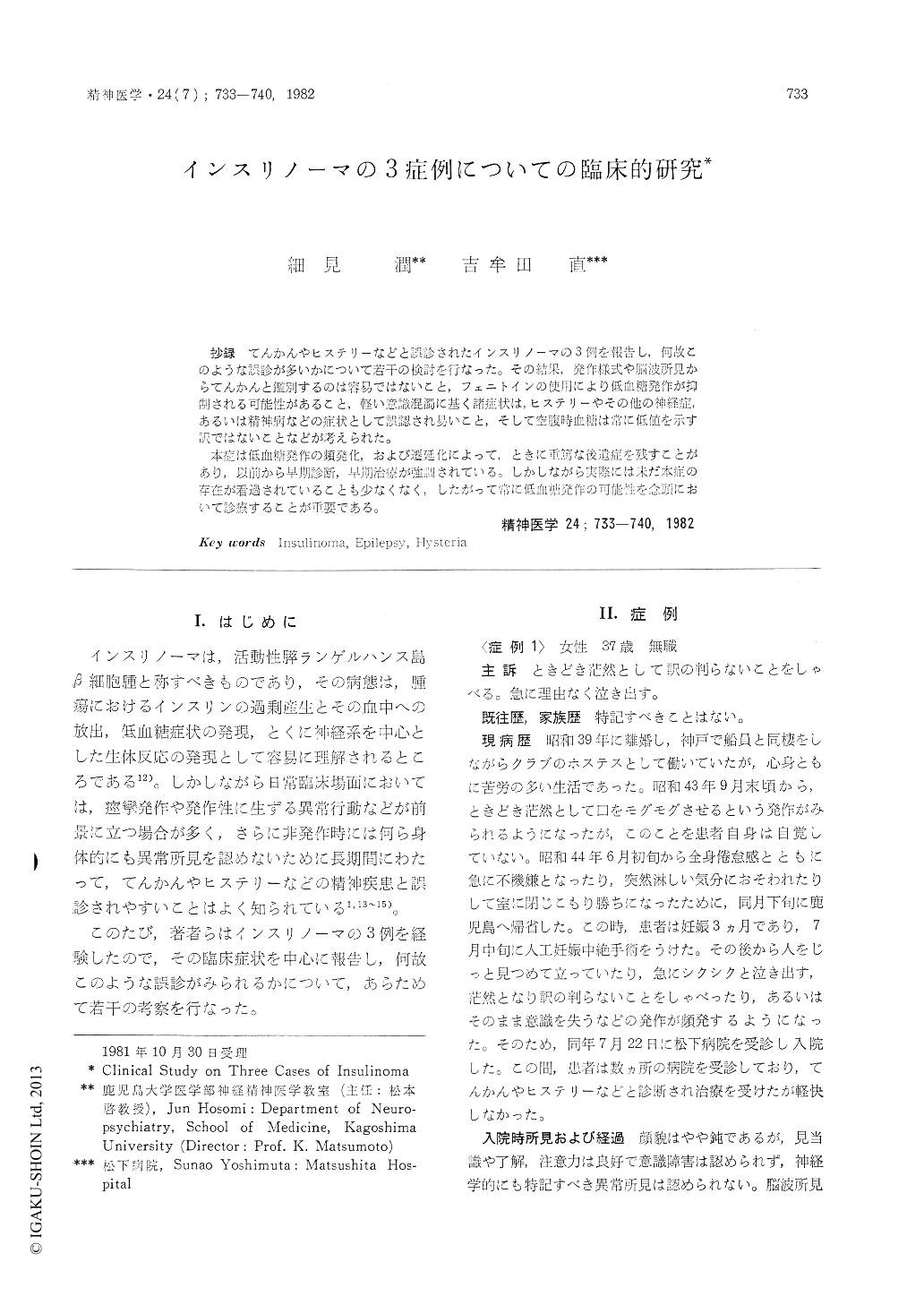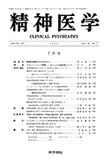Japanese
English
- 有料閲覧
- Abstract 文献概要
- 1ページ目 Look Inside
抄録 てんかんやヒステリーなどと誤診されたインスリノーマの3例を報告し,何故このような誤診が多いかについて若干の検討を行なった。その結果,発作様式や脳波所見からてんかんと鑑別するのは容易ではないこと,フェニトインの使用により低血糖発作が抑制される可能性があること,軽い意識混濁に基く諸症状は,ヒステリーやその他の神経症,あるいは精神病などの症状として誤認され易いこと,そして空腹時血糖は常に低値を示す訳ではないことなどが考えられた。
本症は低血糖発作の頻発化,および遷延化によって,ときに重篤な後遺症を残すことがあり,以前から早期診断,早期治療が強調されている。しかしながら実際には未だ本症の存在が看過されていることも少なくなく,したがって常に低血糖発作の可能性を念頭において診療することが重要である。
Generally, patients with insulinoma are liable to be misdiagnosed as having epilepsy or hysteria over a long period of time since they show convulsive seizures or paroxysmal abnormal behaviors as main symptoms. We studied three cases of insulinoma and gave some of the reasons why such misdiagnosis was made.
It is not easy to differentiate a hypoglycemic attack due to insulinoma from epilepsy by either the mood of the seizure or EEG findings. Moreover, a hypoglycemic attack may be suppressed temporarily in some cases of insulinoma by the use of phenytoin, an antiepileptic drug which inhibits insulin secretion.
Symptoms such as loss of concentration, circumstantial thought, lability of mood and feeling, emotional instability, infantile attitude, euphoria, dysphoria and depressive mood observed in mild clouding of consciousness are liable to be taken for symptoms of hysteria and other neuroses or psychoses. In such cases it is necessary to reexamine the fasting blood sugar level, which is not always low in insulinoma.
When hypoglycemic attacks become frequent or prolonged, insulinoma may leave serious sequelae. For this reason the need for early treatment of insulinoma has been emphasized. In actuality, however, the presence of insulinoma is overlooked in many cases.
It is therefore important that we should take the possibility of hypoglycemia into consideration for diagnosis and treatment.

Copyright © 1982, Igaku-Shoin Ltd. All rights reserved.


